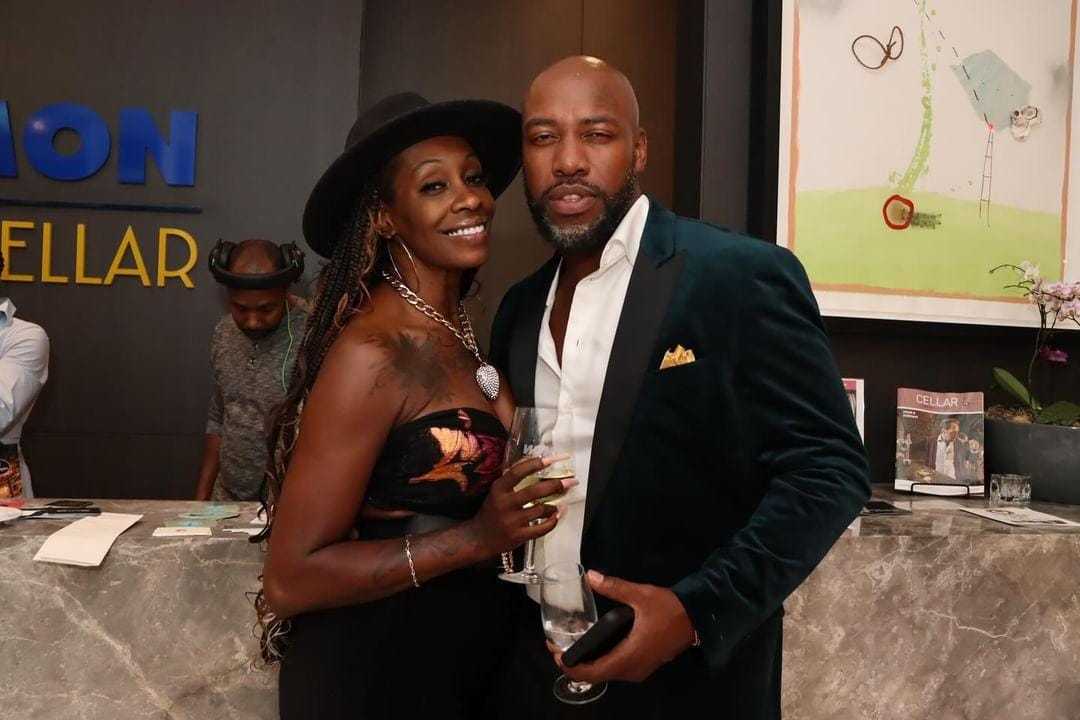on
BY SIMONE J. SMITH
As I walked into Dymon Wine Cellar, I was immediately enveloped by an atmosphere of sophistication and elegance. The soft hum of polished conversations mingled with the clinking of crystal glasses, creating a harmonious backdrop for the evening. Men and women, impeccably dressed, stood in small, animated clusters, each group radiating a sense of purpose and ambition.
The men wore tailored suits that fit them like a second skin, the fine fabrics and meticulous cuts showcasing their attention to detail. Crisp white shirts, accented with silk ties, or pocket squares, added a touch of flair to their ensembles. Shoes gleamed under the chandelier lights, each step they took exuding confidence and poise.
The women, equally striking, glide through the room in an array of stunning attire. Chic cocktail dresses in a spectrum of rich colours and luxurious textures caught my eye. Each outfit was perfectly complemented by exquisite jewelry that sparkled and caught the light, and sophisticated hairstyles and makeup that enhanced their natural beauty.
As I moved further into the room, the warm, golden glow of the ambient lighting bathed the scene, highlighting the intricate decor and the opulence of the surroundings. Servers in crisp uniforms wove through the crowd with trays of gourmet canapés and glasses of fine wine and barreled whisky, offering guests a taste of luxury. The aroma of delicately prepared hors d’oeuvres wafted through the air, enticing me to indulge.
I could feel the energy and excitement in the room – a collective anticipation of new: connections, opportunities, and collaborations. Everywhere I looked, there were smiles, handshakes, and the exchange of business cards, as conversations flowed seamlessly from introductions to deeper discussions about ambitions and visions.
This was more than just a networking event; it was a celebration of success, ambition, and the shared journey towards greater heights. As I took it all in, I couldn’t help but feel inspired and ready to make my mark amidst this gathering of the best and brightest.
Collaboration is key in today’s interconnected world, and it is why networking is vital for several reasons. The art of networking involves creating a lasting impression, fostering relationships, and opening doors to opportunities. Networking can lead to partnerships, joint ventures, and innovative solutions to challenges.
For job seekers, networking is invaluable. Many positions are filled through referrals and personal connections. A strong network can provide job leads, recommendations, and career advice. For entrepreneurs, networking is crucial for finding investors, customers, and mentors. It’s about telling your story and finding those who believe in your vision. Mentorship is another significant benefit of networking. Experienced professionals can offer guidance, support, and wisdom, helping you navigate your career path more effectively. Beyond professional gains, networking builds a sense of community. It creates a support system where you can share successes, seek advice, and celebrate milestones together.
So, how do you master the art of networking?
I had the pleasure of being invited to the exclusive networking event at Dymon Wine Cellar on Thursday July 18th, 2024. The illustrious Business Card Soiree, hosted by the charismatic Anthony Love and the visionary Adoch B Acemah (Founder of Made by Adoch) was a vibrant gathering of elite minds and business gurus from all sectors, coming together to share invaluable business tips, exchange innovative ideas, and, of course, savor some exquisite wine. DJ Dave Rankin kept the atmosphere lively with his beats, while the Dymon Wine Cellar team went above and beyond to make everyone feel exceptionally welcomed and at ease.
I had a chance to catch up with co-host Anthony Love, and he shared how he felt about his first ever networking event.
“I wanted something that people could come together with purpose. I don’t like going out anymore, because it is about drinking, spending money, and at the end of it there is not much accomplished. With the Business Card Soiree it was about networking, money to be made, and bringing a mix of people to the venue.”
“I have gotten some great feedback, and the one thing that rang true was that for many of the guests, it felt exclusive, they thought it was a great venue, and they want to know when we are going to do this event again. I just have to deal with the semantics and figure out what I have to add to it to make it different.”
“I have never been to a networking event. Usually, I just network with people. I enjoy engaging in great conversations, and after sitting down and speaking with Adoch, she gave me the motivation to do it. She was a great help, and such a support throughout this.”
“The challenge I had was of course people. Many were buying tickets late, RSVPing at the last minute, and Eventbrite suspended the account. I couldn’t get to see the list of people who purchased tickets, and I didn’t get the pay-out. They didn’t respond to emails, so I had to create another link for our guests to register and pay for the event. I am so thankful that one of my friends helped me create a website for a link to send to people so that people could pay for tickets.”
What I learned that night was that networking is not just about what you can get, but also about what you can give. Offer your help, share your knowledge, and be a connector for others. In the modern world, networking is an essential skill. It’s not just about exchanging business cards or making small talk; it’s about building meaningful connections. The art of networking is a journey. It’s about building relationships that enrich your professional and personal life. Embrace it, and watch your opportunities flourish.
Stay in the loop with exclusive news, stories, and insights—delivered straight to your inbox. No fluff, just real content that matters. Sign up today!
We, as humans are guaranteed certain things in life: stressors, taxes, bills and death are the first thoughts that pop to mind. It is not uncommon that many people find a hard time dealing with these daily life stressors, and at times will find themselves losing control over their lives. Simone Jennifer Smith’s great passion is using the gifts that have been given to her, to help educate her clients on how to live meaningful lives. The Hear to Help Team consists of powerfully motivated individuals, who like Simone, see that there is a need in this world; a need for real connection. As the founder and Director of Hear 2 Help, Simone leads a team that goes out into the community day to day, servicing families with their educational, legal and mental health needs.Her dedication shows in her Toronto Caribbean newspaper articles, and in her role as a host on the TCN TV Network.













